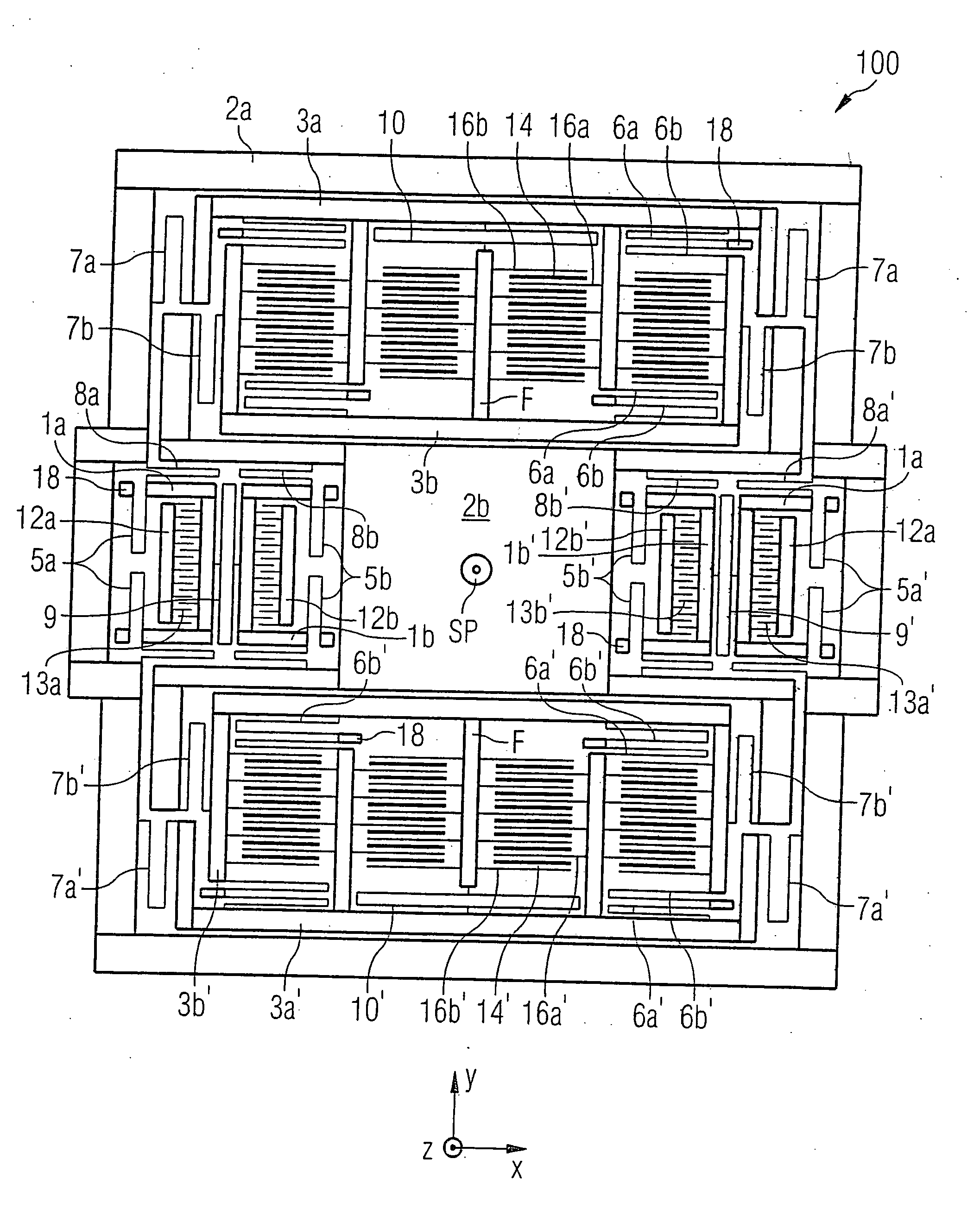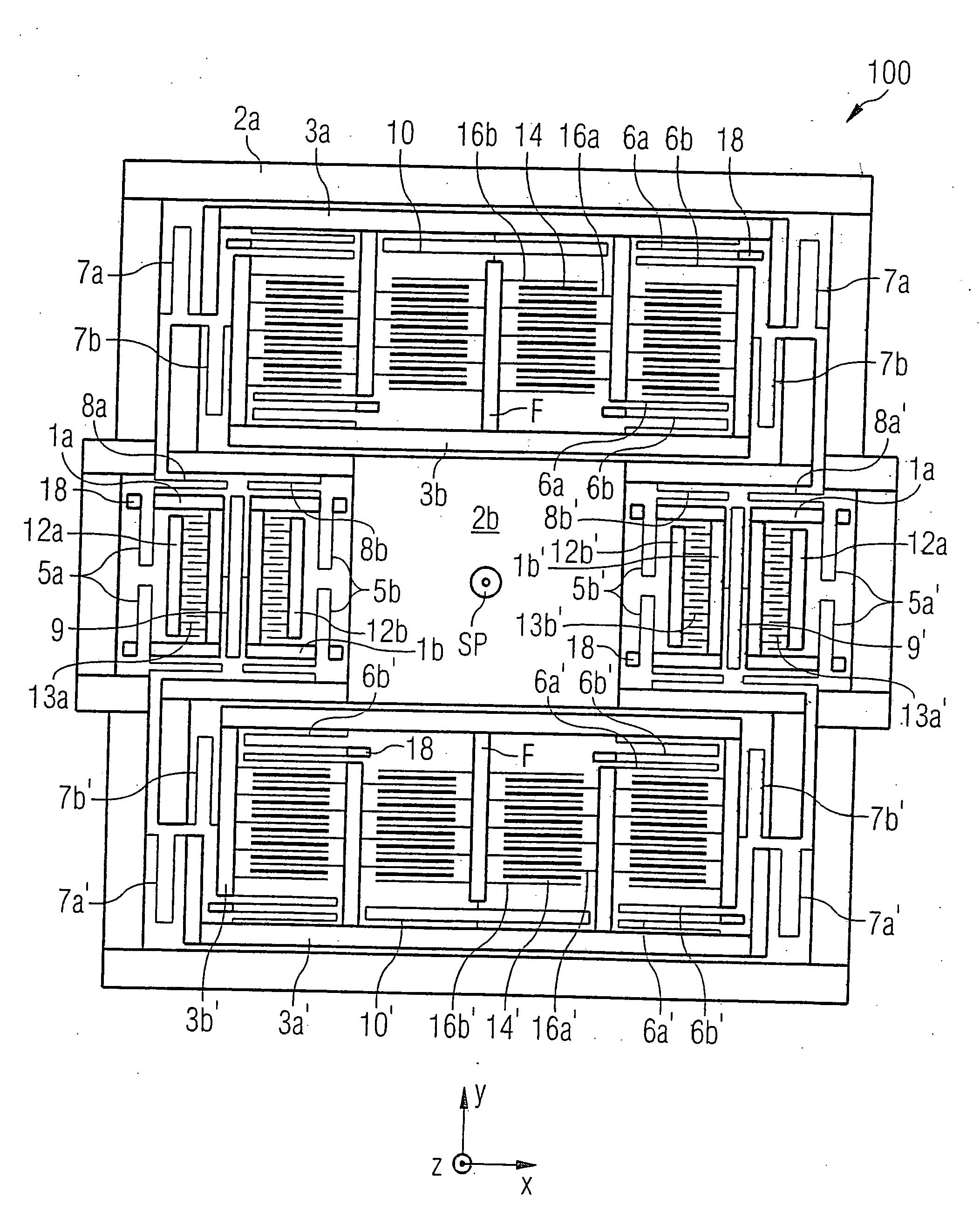Micromechanical rotational rate sensor
a technology of rotational rate sensor and micro-mechanical structure, which is applied in the direction of acceleration measurement using interia force, turn-sensitive devices, instruments, etc., can solve the problems of insufficient robustness of the structure, the sensitivity of the structure with respect to interference acceleration, and the known rotational rate sensor may be particularly sensitive to this kind of interference acceleration, so as to reduce the sensitivity to interference acceleration, the effect of reducing the acceleration of interference in particular in the vehicl
- Summary
- Abstract
- Description
- Claims
- Application Information
AI Technical Summary
Benefits of technology
Problems solved by technology
Method used
Image
Examples
Embodiment Construction
[0028] For reasons of clarity, not all elements in FIGURE 1 have been provided with reference numerals.
[0029] In FIGURE 1, 1a denotes a first activating mass element, 1a′ a second activating mass element, 1b a third activating mass element and 1b′ a fourth activating mass element. 2a is a first Coriolis mass element and 2b is a second Coriolis mass element. 3a denotes a first detecting mass element, 3a′ a second detecting mass element, 3b a third detecting mass element and 3b′ a fourth detecting mass element.
[0030] As may be seen in FIGURE 1, all the functional mass elements 1a, 1a′, 1b, 1b′, 2a, 2b, 3a, 3a′, 3b, 3b′ are situated symmetrically in such a manner that their center of gravity coincides at a common mass center of gravity SP, which lies at the center of the vibrating structure. All individual masses are suspended movably over substrate 100. Besides setting the common mass center of gravity, the selected symmetrical construction also assures nonsensitivity to process tol...
PUM
 Login to View More
Login to View More Abstract
Description
Claims
Application Information
 Login to View More
Login to View More - R&D
- Intellectual Property
- Life Sciences
- Materials
- Tech Scout
- Unparalleled Data Quality
- Higher Quality Content
- 60% Fewer Hallucinations
Browse by: Latest US Patents, China's latest patents, Technical Efficacy Thesaurus, Application Domain, Technology Topic, Popular Technical Reports.
© 2025 PatSnap. All rights reserved.Legal|Privacy policy|Modern Slavery Act Transparency Statement|Sitemap|About US| Contact US: help@patsnap.com


